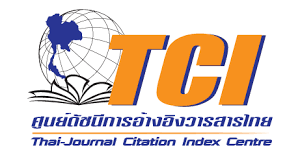Improving Heavy Maintenance Management Efficiency under Limited Depot Resources: A Case Study of MRT Pink Line
DOI:
https://doi.org/10.55003/ETH.420206Keywords:
Heavy Maintenance, Maintenance Scheduling, Flexible Maintenance Planning, Mixed-Integer Linear Programming (MILP), Rail Fleet Management, Asset Utilization, Urban Rail SystemAbstract
This research focuses on optimizing the heavy maintenance scheduling of the Pink Line MRT using two models: a non-flexible model (fixed at 120,000 km) and a flexible model, which allows a ±10% adjustment in the accumulated mileage (108,000 - 132,000 km). The study employs Mixed-Integer Linear Programming (MILP) and a two-year simulation to analyze the effects of key constraints, including depot capacity, repair duration, and flexibility levels. The results indicate that a 10% flexibility reduces unused accumulated mileage by 55.97% and increases utilized mileage by 10%, without requiring additional resources. However, increasing the flexibility to 15% yields diminishing returns, leading to higher operational costs and potential safety risks. Conversely, reducing flexibility to 5% helps control costs but increases maintenance frequency, affecting operational stability. Additionally, sensitivity analysis reveals that a depot capacity of C = 2 (2 maintenance tracks per day) with a 5-day repair duration is optimal, balancing efficiency and resource allocation. C = 1 leads to maintenance congestion and reduced operational efficiency, whereas C = 2 effectively distributes maintenance workload without delays. Although C = 3 shortens repair time, it offers only marginal benefits compared to the increased costs. The findings highlight the importance of strategic flexibility management and optimized depot capacity to reduce maintenance frequency, enhance resource utilization, and improve overall train operation management. This research provides valuable insights for railway maintenance planning, contributing to cost reduction and long-term operational efficiency.
References
Y. Sripraprutchai and W. Tharmmaphornphilas, “A Methodology to Determine the Number of Rolling Stock for Transportation Services and Preventive Maintenance,” The Journal of King Mongkut’s University of Technology North Bangkok, vol. 28, no. 1, pp. 123–133, 2018, doi: 10.14416/j.kmutnb.2018.01.020.
B. Lin, Y. Shen, Z. Wang, S. Ni and Y. Zhao, “An iterative improvement approach for high-speed train maintenance scheduling,” Transportation Research Part B: Methodological, vol. 173, pp. 292–312, 2023, doi: 10.1016/j.trb.2023.05.008.
B. Lin, J. Wu, R. Lin, J. Wang, H. Wang and X. Zhang, “Optimization of high-level preventive maintenance scheduling for high-speed trains,” Reliability Engineering & System Safety, vol. 183, pp. 261–275, 2019, doi: 10.1016/j.ress.2018.11.028.
J. Wang, “Maintenance scheduling at high-speed train depots: An optimization approach,” Reliability Engineering & System Safety, vol. 243, 2024, Art. no. 109809, doi: 10.1016/j.ress.2023.109809.
J. Wu, B. Lin, J. Wang and S. Liu, “A Network-Based Method for the EMU Train High-Level Maintenance Planning Problem,” applied sciences, vol. 8, no. 1, 2017, Art. no. 2, doi: 10.3390/app8010002.
G. L. Giacco, D. Carillo, A. D’Ariano, D. Pacciarelli and Á. Marín, “Short-term rolling stock rostering and maintenance scheduling optimization,” University of Roma Tre, Rome, Italy, Rep. RT-DIA-209-2014, 2014.
Downloads
Published
How to Cite
Issue
Section
License
Copyright (c) 2025 School of Engineering, King Mongkut’s Institute of Technology Ladkrabang

This work is licensed under a Creative Commons Attribution-NonCommercial-NoDerivatives 4.0 International License.
The published articles are copyrighted by the School of Engineering, King Mongkut's Institute of Technology Ladkrabang.
The statements contained in each article in this academic journal are the personal opinions of each author and are not related to King Mongkut's Institute of Technology Ladkrabang and other faculty members in the institute.
Responsibility for all elements of each article belongs to each author; If there are any mistakes, each author is solely responsible for his own articles.






